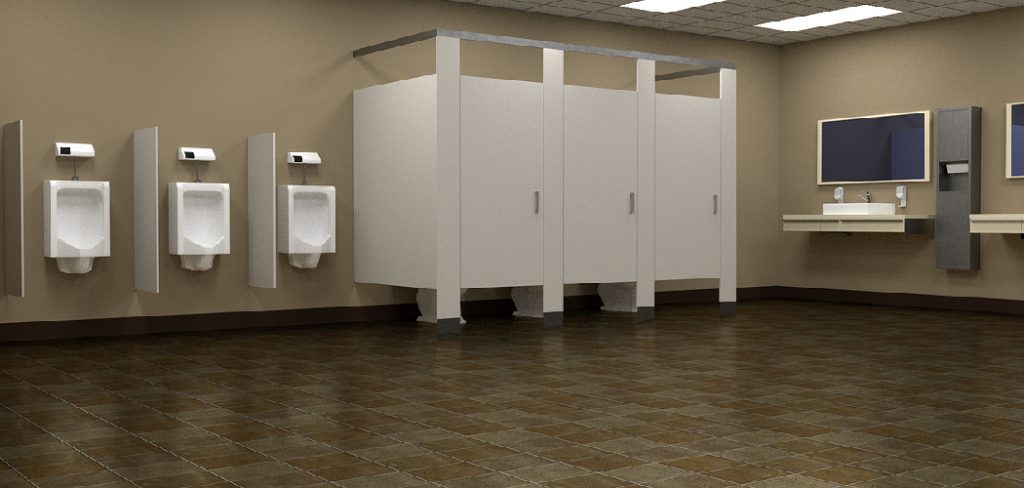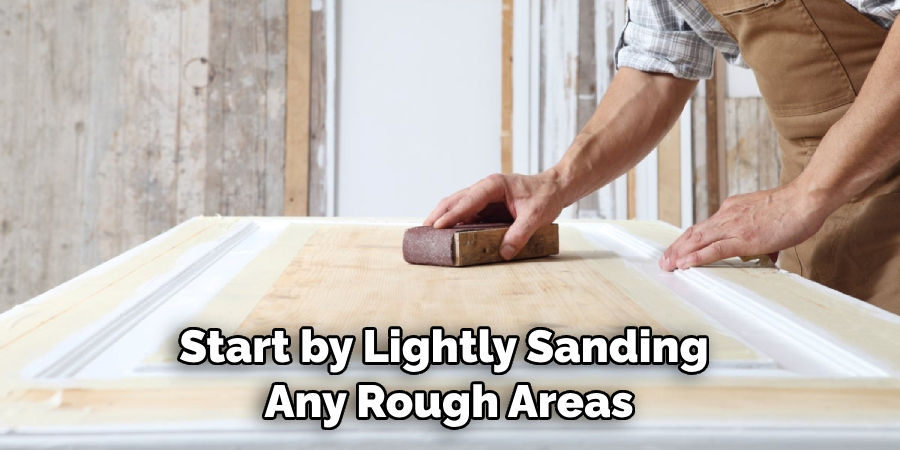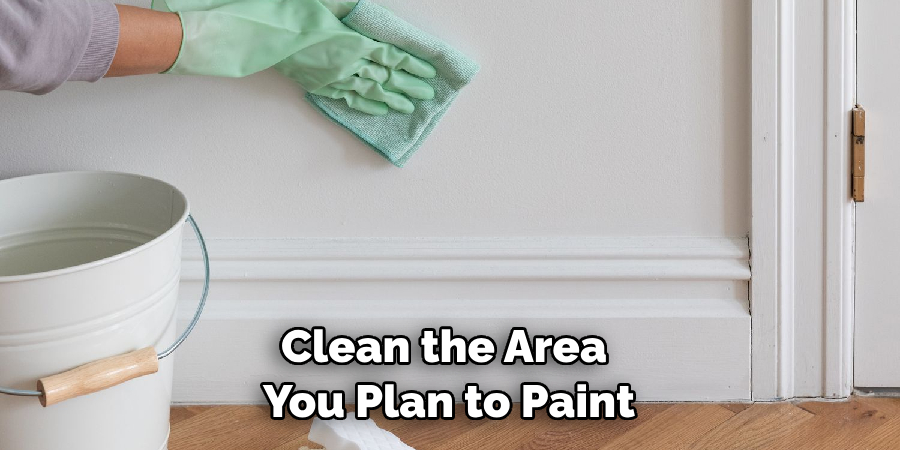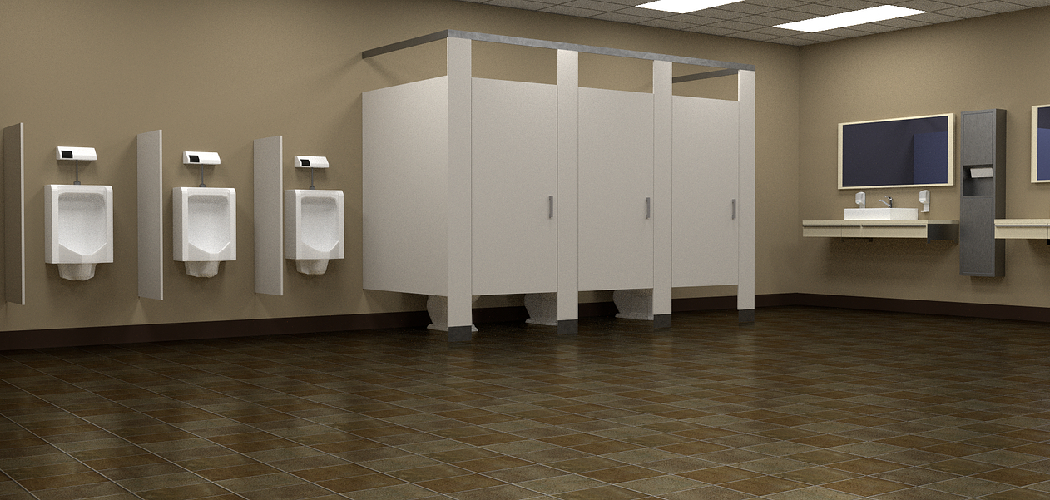Painting bathroom stalls is an important job, but it can also be tricky if you don’t know the proper steps and techniques. It requires a lot of prep work and careful attention to detail in order for it to turn out to look good.
From selecting the right materials to getting those hard-to-reach spots just right, there are a few key tips that will help you ensure success when tackling this project—so let’s dive in!

Painting is not only a great way to freshen up the look of your bathroom stalls, but it also adds value and can protect from any future damage. Whether you are looking for an easy DIY project or need a more thorough approach, there are many options available when it comes to painting bathroom stalls.
In this blog post, we will discuss some tips on how to paint bathroom stalls for the best results possible- from what type of paint you should use and prepping the surface prior to painting all the way through proper clean-up afterward. So if you’re ready to makeover your booth in no time at all, keep reading!
Why May You Want to Paint Bathroom Stalls?
1. To Freshen Up the Look of Your Bathroom Stalls
One of the main reasons why you may want to paint your bathroom stalls is to give them a fresh, new look. If you’ve had the same colored walls for years, it can start to make your restroom look dull and outdated. Painting over the existing color with a bright shade or decorative pattern can instantly enhance the atmosphere of your restroom.
2. To Cover Up Marks and Discoloration
Another reason why you may want to paint your bathroom stalls is to cover up unwanted marks or discoloration. Over time, surfaces in bathrooms can become stained with dirt, soap scum, or mold growth which can be difficult and time-consuming to clean off.
Painting the walls can help disguise these unsightly blemishes and make the restroom look cleaner and brighter.

3. To Make Cleaning Easier
Finally, painting bathroom stalls can help make cleaning easier in the long run. Many types of paint are formulated for easy cleaning and won’t show fingerprints or scuffs easily. This means that you won’t have to spend as much time scrubbing away stubborn marks or dirt from your restroom walls, saving you time and effort in the future.
All of these reasons demonstrate why painting your bathroom stalls is a great way to freshen up the look of your restroom while making cleaning easier in the long run. With the right supplies and knowledge, you can easily paint your bathroom stalls to give them a brand new look!
How to Paint Bathroom Stalls in 5 Easy Steps
Step 1: Gather All The Tools
The very first step is to gather all the tools and materials you will need for painting the bathroom stalls. Make sure to have paint, brushes, thinners, sandpaper, masking tape, drop cloths and other necessary items.
Step 2: Prepare The Room
Before beginning the actual painting process, make sure to prepare the room first. Remove any furniture or fixtures that may be in the way and clean the surfaces of the room. You may also need to repair any damage to the walls or ceiling before starting.
Step 3: Mask Off Areas
Using masking tape, mask off any areas that you don’t want to be painted. This includes window frames, doors, and baseboards. Make sure that all edges are sealed with a line of tape.
Step 4: Prime The Stalls
Once the room is ready, it’s time to start priming the stalls. Start by lightly sanding any rough areas and then apply an even coat of primer. Make sure to allow ample drying time between coats.

Step 5: Paint The Stalls
Once the primer has dried completely, it’s time to start painting the stalls. Use a brush with short bristles and apply even coats of paint. Allow the first coat to dry completely before starting with the second coat. Make sure not to worry about any imperfections in your painting as these can easily be covered up with another layer of paint.
Once all layers have been completed, allow ample drying time before reattaching any fixtures or furniture. You have now successfully painted your bathroom stalls and should be proud of the results! Good luck!
Some Extra Tips to Paint Bathroom Stalls
1. Do Not Use Cheap Paint
Though it may be tempting to save money by buying inexpensive paint, you will actually end up spending more in the long run. Low-quality paints often need to be reapplied much sooner and require more coats due to uneven coverage.
2. Protect Yourself
Make sure that you are wearing a face mask and safety goggles when painting bathroom stalls, as the fumes can be overwhelming.
3. Use Primer
You should always apply primer before painting any surface, but it’s especially important for bathroom stalls since they are made of metal and require a strong bond between the paint and the surface.
4. Clean the Surface Before Painting
Be sure to thoroughly clean the area you plan to paint before you begin. This will help the paint adhere better and give you a professional-looking finish.

5. Use Multiple Coats of Paint
Applying multiple coats of paint will ensure that your finished product is durable and looks professional. You can also use different colors to create an interesting design on the wall or stall door.
6. Make Sure Everything Is Dry Before Releasing It for Use
Before you release the stall for use, make sure that all of the paint is completely dry. This will help ensure that it lasts longer and looks better in general.
7. Don’t Forget to Clean Up
Make sure you have a plan for cleaning up any excess paint or primer when you are done painting your bathroom stalls. Do not leave behind any materials that can potentially harm the environment.
8. Don’t Skimp on Quality
When it comes to painting bathroom stalls, quality matters. Always use high-quality paints and brushes for the best results. This will help ensure that your finished product is long-lasting and looks great.
9. Consider a Professional Painter If You Have No Experience
If you have never painted a bathroom stall before, it is best to hire a professional. This will ensure that you get the job done right and quickly, without making any mistakes.
10. Ask for Advice from Someone Who Has Painted Before
If you don’t know how to paint bathroom stalls, it’s best to ask for advice from someone who has experience with this type of project. This will help ensure that you have all the necessary information to complete the job correctly and efficiently.
Overall, painting bathroom stalls can be a relatively simple task if done correctly. With the right prep work and materials, you can create a professional-looking paint job that will last for years to come. Good luck!
Frequently Asked Questions
What Precautions Should I Take Before Painting?
Before you start painting bathroom stalls, make sure to wear protective clothing, such as a dust mask and gloves. Additionally, open all windows and doors in the area to ensure proper air circulation. Make sure to clean the walls thoroughly before beginning any painting job and consider using an oil-based primer for better adhesion.
What Kind of Paint Should I Use?
For bathroom stalls, you should use high-quality latex paint. Latex paints are water-resistant and easy to clean up, making them ideal for a bathroom environment. Choose a paint that is specifically made for bathrooms, as it will be more durable and resistant to moisture damage.

What Is the Best Way to Apply the Paint?
When painting a bathroom stall, use a roller or spray gun to apply the paint. A roller will help ensure that the paint is evenly distributed and penetrate into any vices. If you are using a spray gun, make sure to wear a breathing mask and use low-pressure settings to avoid overspray.
Finally, allow the paint to dry thoroughly between coats for a professional finish.
Are There Any Special Considerations?
When painting bathroom stalls, it’s important to seal the edges and corners properly. These areas are more susceptible to moisture damage and should be sealed with caulk or another sealant to protect them from water damage. Additionally, use mildew-resistant paint on all surfaces for added protection against mold growth.
Conclusion
In summary, painting bathroom stalls can seem like a daunting task at first, but if done correctly it can make the room look brand new and leave a lasting impression. Whether your stall is metal or plastic, be sure to take the necessary precautions and wear protective equipment.
Remember to keep all of the required materials on hand during the entire process. Be sure to use the correct brushes and paints for your stall material, as this will guarantee the best results. With these tips on how to paint bathroom stalls in mind, you are sure to be successful in giving your bathroom stalls a much needed makeover.

